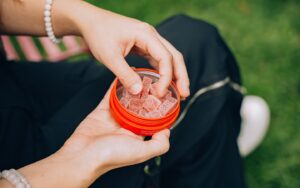Even with cannabis legalization only taking shape in the United States for the past couple of decades, you may still have hesitations about giving it a try. The majority of Americans have smoked cannabis, according to NBC news reports. Cannabis use in American adults 65 years and older increased 10 times between 2007 to 2017, but there are still some people holding out.
Trying anything for the first time can bring up questions. If you’re curious about how cannabis can help you manage pain or enhance your life, you may also be wondering just how it will affect you on your first try.
What It’s Like to Try Cannabis for the First Time
Cannabis has the potential to enhance your life and unlock new experiences. Recreational use could lead to a brand new appreciation of music and art, or it could lead to great times with friends. On the medical side, if you’re having aches, pains, or low moods, and want to try an alternative to conventional pharmaceuticals, cannabis could be your ideal solution.
Smoking cannabis for the first time
If you decide to smoke or vape cannabis for your first cannabis experience, here’s a step-by-step procedure and what you might expect:
To feel the effects of cannabis, make sure you’re inhaling, whether that’s through a vape pen, pipe, bong, rolled paper or whatever you’re using.
The first time you smoke, you may have an intense urge to cough. It’s normal, and it can decrease as your body gets used to inhaling cannabis smoke.
Cannabis tolerance can increase the more you smoke. The first time, you will have your lowest tolerance. So take one puff, and wait to feel the effects before doing it again. Give yourself several minutes between puffs, just to be on the cautious side.
The cannabis experience
The effects of cannabis can typically be felt within minutes and should peak within 30 minutes, not everyone will have the exact same onset time. Cannabis has a wide range of effects (depending on the cultivar), but most first-time users describe an abstract, euphoric feeling. You might feel tingling in your limbs, fingers, and toes. Time might start to seem to slow down. You might giggle at nothing in particular, or find everything funny, or start to feel hungry. These are all normal effects.
These experiences are caused by the various cannabinoids in cannabis binding with the CB1 and CB2 receptors in your brain. These receptors determine and mediate the effects of cannabis throughout your brain and body, causing changes in perception and abstract sensations.
Many users claim the cannabis experience gives them more acute appreciation of movies, art, and music. Astronomer Carl Sagan said of cannabis,
“The cannabis experience has greatly improved my appreciation for art, a subject which I had never much appreciated before. The understanding of the intent of the artist which I can achieve when high sometimes carries over to when I’m down. This is one of many human frontiers which cannabis has helped me traverse… A very similar improvement in my appreciation of music has occurred with cannabis. For the first time I have been able to hear the separate parts of a three-part harmony and the richness of the counterpoint. I have since discovered that professional musicians can quite easily keep many separate parts going simultaneously in their heads, but this was the first time for me.” –Carl Sagan, “Marihuana Reconsidered” under the pseudonym “Mr. X”
In contrast to these euphoric and profound revelations, some first-time users report feeling nothing whatsoever. If this occurs, wait 15 to 20 minutes, and try a small puff again. As your body gets used to smoking cannabis, your experience will change.
If you feel the effects starting to subside, and you want to strengthen them, you can take another hit. If you want to lower the strength of the effects, it can help to eat some food, move around, breathe deeply or take a shower. Start slowly with smoking, so you can learn your limits and have an optimal experience.
Consuming cannabis edibles for the first time
Eating a cannabis edible can have slightly different effects. When you eat an edible, your body digests, metabolizes, and absorbs the cannabis. Within an hour, you should start to feel the effects, but it can take that long before you feel anything at all.
That’s why it’s vital to start slowly with edibles and take a small dose. Unlike smoking, where cannabinoids go directly to the brain and bloodstream, the cannabinoids in edibles must travel through the digestive tract. The effects can be stronger, even though they take longer to kick in.
Talk to your friendly cannabis rep when purchasing edibles if you’ve never used cannabis before. They’ll recommend the proper dose to start off with. Once you’re experiencing the effects from the edible, you’ll likely feel euphoric and hunger-inducing effects, similar to smoking. Users have reported more of a “body-high” feeling from edibles, but it depends on thecontents and quality of your edible.
One benefit of using edibles and tinctures is avoiding the smell and smoke involved with smoking cannabis. Edibles are much more discreet than smoking and vaping cannabis products.
Cannabis Myth-Busting
Trying new things can be intimidating, but getting out of your comfort zone and opening yourself to new experiences may change your life for the better. Here are some insights that can help you get over any hesitations you may have of trying cannabis.
Cannabis is not a gateway drug
Maybe you’re concerned that smoking cannabis will influence you to want to go harder with your substance use.Multiple studies have found no conclusive evidence that cannabis increases drug abuse.
“The psycho-social observation that the use of some psychoactive substances (“drugs”) is often followed by the use of other and more problematic drugs has given rise to a cluster of so-called ‘gateway drug hypotheses,’ and such hypotheses have often played an important role in developing drug use policy. The current essay suggests that drug use policies that have drawn on versions of the hypothesis have involved an unjustified oversimplification of the dynamics of drug use, reflecting the interests of certain stakeholders rather than wise social policy. The hypothesis should be retired.” –John Kleinig, PhD, Emeritus Professor of Philosophy in the Department of Criminal Justice, John Jay College of Criminal Justice
Cannabis is safer than opioids
A Harvard researcher wrote that medical cannabis is clearly safer than opiates because it is impossible to overdose on and is far less addictive. For those looking for opioid alternatives, cannabis is a safe choice.
“While marijuana isn’t strong enough for severe pain (for example, post-surgical pain or a broken bone), it is quite effective for the chronic pain that plagues millions of Americans, especially as they age. Part of its allure is that it is clearly safer than opiates (it is impossible to overdose on and far less addictive) and it can take the place of NSAIDs such as Advil or Aleve, if people can’t take them due to problems with their kidneys or ulcers or GERD.” –Peter Grinspoon, MD, Harvard Medical School
Other studies have found that cannabis is less harmful than tobacco and alcohol, related to health issues like lung damage and liver damage.
Cannabis doesn’t kill brain cells
A misguided concern about cannabis is that it damages the brain. Even heavy, long-term cannabis use has little effect on memory and learning. In fact cannabis has been shown to have a neuroprotective effect, which means it assists in the regeneration and recovery of the nervous system. It protects the brain at a cellular level and has also been found to have anxiolytic, antidepressant, and immunomodulatory benefits.
If society is to graduate to an era of quality cannabis research, we must dispel these hurtful and baseless stereotypes about cannabis.
Tips for Trying Cannabis for the First Time
Cannabis is among the least harmful recreational substances, one that can help you overcome pain without addiction, and with the majority of the public support in America.
Use cannabis legally
First, follow all local laws. In Massachusetts, cannabis is legal for medical and recreational uses, with some legal conditions.
For the best experience smoking or ingesting for the first time, you may want to start off with a lower percentage of THC (10% vs. 20%) or a product that also has CBD (typically shown in ratios as 1:1 or 3:1). It’s also important to “go slow and low” when it comes to cannabis dosage; reaching peak cannabis effects can take anywhere from a half-hour to hours after ingestion. Especially with edibles, take less than you think you need for your first experience and be patient.
Stay in a place where you feel comfortable, relaxed and safe
Make sure you have no plans after you try cannabis for the first time, for at least several hours. The effects can last 1-4 hours, depending on your method of consumption. Clear your schedule so that you have time to experience the effects and process how you feel about them.
Make sure you have food and water where you are trying cannabis, or have access to a food delivery service.
It’s best to try cannabis for the first time in a supportive environment. You might want a friend or loved one with you.
Never drive while experiencing the effects of cannabis. It’s illegal and dangerous. If you plan on going somewhere after using cannabis, make sure you have a ride or have access to a ride-share app.
Let Happy Valley Guide You Through Your First Time
Everyone’s first time with cannabis is a little different.
At Happy Valley, cannabis is our passion. We want to provide every client with the safest, most enjoyable experience using cannabis, every single time. We can recommend ideal cultivars, and methods so that your first time is pleasurable and gives you the effects you’re looking for.
Learn more about our artisan cannabis or contact our expertly-educated hosts to request information.




